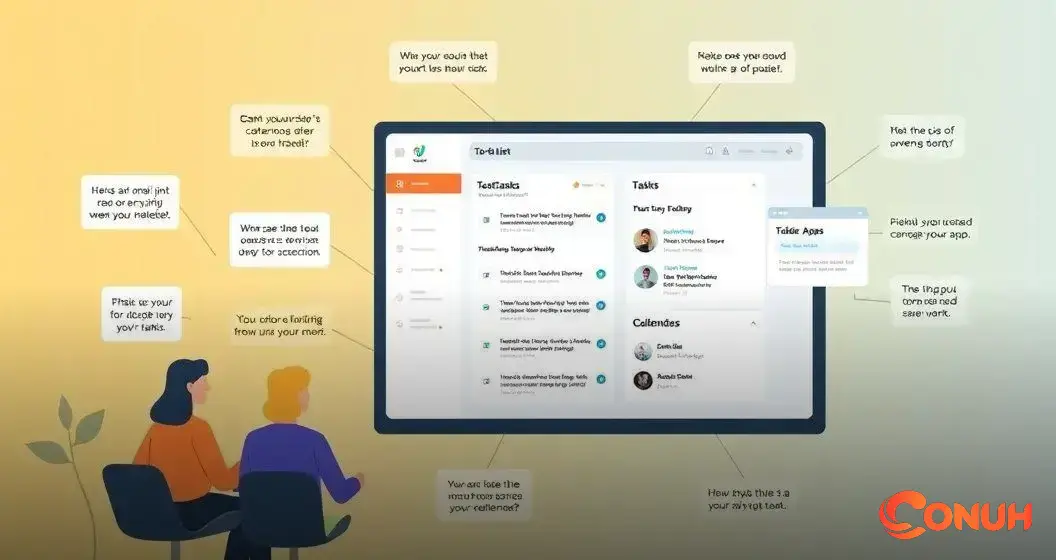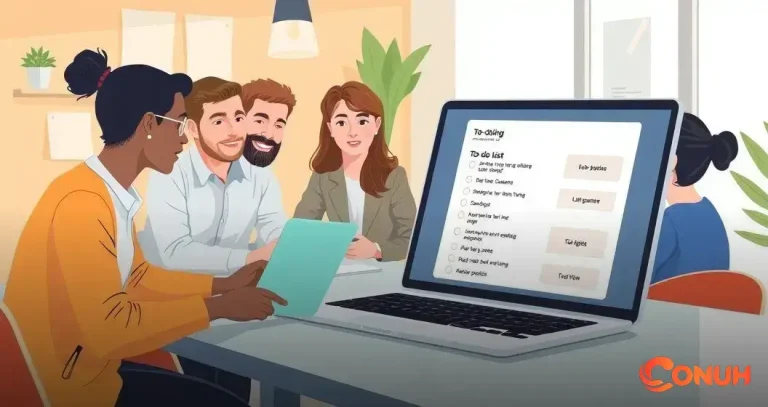ADVERTISEMENT
To-Do List App for Small Teams can be the game-changer that transforms group chaos into smooth collaboration. It’s the secret weapon for keeping everyone aligned, accountable, and moving in the same direction. When you find the right one, it feels less like a tool and more like your team’s central nervous system.
The magic lies in moving beyond simple lists to a shared space where tasks are clear, progress is visible, and communication is seamless. It’s about replacing endless email threads and confusing spreadsheets with a single source of truth. This clarity is what empowers small teams to achieve big things together.
ADVERTISEMENT
Ready to discover how the right features can streamline your workflow and supercharge your team’s productivity? Let’s explore what makes these apps so essential for modern teamwork.
Overview of To-Do List Apps
To-do list apps are tools that help people manage their tasks easily. They allow users to keep track of what needs to be done, making everyday life more organized. By simply adding tasks, users can see their priorities and deadlines at a glance.
These apps often come with extra features, like reminders and sharing options. Teams can work better together by assigning tasks and checking off completed ones. This encourages collaboration and accountability, essential for small teams aiming to boost productivity.
With many to-do list apps available, finding one that fits your team’s needs is crucial. Look for apps that are easy to use and sync across devices. This way, everyone stays updated, making task management effective and effortless.
Benefits of Using To-Do List Apps for Teams
Using to-do list apps for teams can lead to improved communication. When everyone knows their tasks, there’s less confusion. This clarity helps team members stay focused on what they need to do, reducing misunderstandings and ensuring everyone is on the same page.
Another benefit is increased productivity. To-do list apps allow teams to prioritize their tasks effectively. By breaking projects into manageable chunks, teams can tackle their workload step by step. This not only makes the work feel less overwhelming but also allows teams to celebrate small wins along the way.
Finally, these apps promote accountability within the team. When tasks are assigned, each member takes ownership of their responsibilities. This encourages team members to check off their tasks and meet deadlines, ultimately leading to a more successful and efficient team.
Key Features to Look for

When choosing a to-do list app for small teams, consider the user interface. A clean and simple design makes it easy for everyone to navigate. Team members should be able to add, edit, and check off tasks without confusion. A friendly interface can boost usage and help everyone stay engaged with the app.
Another important feature is collaboration tools. Look for apps that allow team members to assign tasks, set deadlines, and add comments. This way, everyone can communicate about their duties clearly. Having these tools within the app makes coordination much smoother and helps to avoid missed tasks.
Lastly, check for integration options. Your to-do list app should work well with other tools your team already uses. Whether it’s email or calendar apps, seamless integration can save time and streamline workflows. This feature ensures that tasks and reminders are easily accessible in one place.
Top To-Do List Apps for Small Teams
One popular to-do list app for small teams is Trello. This app uses boards and cards to help teams organise their tasks visually. Its drag-and-drop feature makes it easy to move tasks around as priorities change. Whether you’re planning a project or tracking daily tasks, Trello offers a fun and flexible way to stay on top of your work.
Another great option is Asana. This app allows team members to create tasks, set due dates, and track progress. It offers useful features like project timelines and task dependencies, which help teams see how their work is connected. Asana is perfect for teams looking to enhance their collaboration and ensure nothing falls through the cracks.
Finally, Todoist stands out for its simplicity and powerful features. Users can create tasks, set reminders, and even share projects with colleagues. The app offers productivity tracking, allowing teams to see how much they accomplish each week. Todoist’s straightforward design makes it easy for small teams to get started and stay organised.
How to Integrate with Existing Workflows
Integrating a to-do list app into your existing workflow starts with understanding your team’s current processes. Identify how tasks are assigned and monitored. Discuss with your team members to find out what tools they are using. This helps in choosing a to-do list app that can easily blend into their daily routines without causing disruption.
Once you have selected the right app, set up integrations with other tools your team already uses. Many to-do list apps can connect with email, calendars, and project management tools. This makes it easy for team members to track tasks without switching between different applications. Streamlining these connections can reduce time wasted on managing different systems.
Lastly, provide training and resources for your team to get accustomed to the new app. Offer a simple guide on how to use its features effectively. Encourage team members to share their experiences and tips for getting the most out of the app. This support fosters a smooth transition and helps everyone work together more efficiently.
Best Practices for Effective Usage

To make the most of a to-do list app, start by setting clear goals for each project. This involves breaking larger tasks into smaller, manageable parts. When team members understand what they need to achieve, it becomes easier to track progress and stay motivated. Clear goals also help in prioritizing tasks, ensuring the most important work is done first.
An effective practice is to regularly update your task list. Encourage team members to check in daily to add new tasks and adjust priorities as needed. This keeps everyone informed about what’s happening and helps maintain focus. Regular updates foster teamwork and ensure that everyone remains aligned with the group’s objectives.
Finally, review and reflect on your progress. Set aside time each week for the team to discuss completed tasks and what can be improved. This can be a simple meeting or a chat in the app itself. Reflecting helps the team identify areas for better collaboration and boosts motivation for future projects.
Common Mistakes to Avoid
One common mistake is not involving the whole team when selecting a to-do list app. It’s important to consider everyone’s needs and preferences. If the chosen app does not fit well with how team members work, it may lead to frustration and disuse. Engaging the team in this decision helps ensure that the app will be embraced and used effectively.
Another mistake is setting unrealistic expectations for task completion. Teams may overload their to-do lists with too many tasks at once, making it hard to focus on what truly matters. It’s essential to strike a balance and recognise that not every task can be done in a day. Setting achievable goals helps maintain motivation and productivity.
A third mistake is failing to regularly review and update the task list. When tasks pile up without being checked off, it can create overwhelm and confusion. Encouraging team members to prioritise and regularly clean up their lists ensures clarity. This practice keeps everyone accountable and aligned with the team’s goals.
Future Trends in Task Management
One future trend in task management is the increased use of artificial intelligence (AI). AI can help teams by automating repetitive tasks, setting reminders, and even suggesting priority levels for tasks based on deadlines. This technology streamlines workflows, allowing team members to focus on more meaningful work.
Another trend is the rise of collaboration-focused tools. As remote work becomes more common, task management apps will increasingly integrate features that enhance teamwork. These tools will make it easier for team members to communicate, share files, and provide real-time updates on tasks. Strong collaboration features will help small teams stay connected no matter where they are.
Finally, personalisation will play a key role in the future of task management. Users will expect apps to adapt to their individual preferences and work styles. Task management tools may offer customisable dashboards, tailored suggestions, and unique tagging systems. This will help each team member manage tasks in a way that suits them best, boosting overall productivity.







